The HSJ top chief executives list – published earlier this year – put the spotlight on those chief executives of NHS trusts who are delivering excellence against a backdrop of intense pressure. Now we have brought some of those high performing chief executives together for a roundtable debate looking at two key issues.
The first topic for discussion was what does a trust’s Care Quality Commission rating say about the chief executive? Not surprisingly our panel were keen to tease out some of the nuances around this, rather than seeing a linear relationship link between the rating and the performance of the chief executive. Staff engagement was, however, seen as a hallmark of a good chief executive.
The second debate looked at some of the challenges chief executives face as they move their organisations – and often the wider health economy – towards a sustainable future. This has added greatly to the complexity of the role – it’s no longer solely about what doing the best for their own organisation if, indeed, it ever was – and is demanding additional skills and attributes from those leading this work.
Chief executives are also increasingly caught up in a 24/7 world where they can be challenged and criticised through social media. Pressures such as this are making the role ever harder but our panel still felt being a chief executive was a privilege and a job to be proud of.
Getting an outstanding rating from the Care Quality Commission is a boost for any organisation – but what does it say about the person at the top of that organisation? Can they be an outstanding leader if their organisation gets a significantly lower rating?
This year’s HSJ top 50 chief executives roundtable drew together leaders from trusts with a wide range of ratings with several “outstandings” but also some leading trusts which “required improvement” to look at the relationship between CQC ratings and chief executives.
HSJ editor and chair Alastair McLellan said when the top 50 was being drawn up this year that the judges had often asked what the CQC ratings for organisations were and it seemed to play an increasing part in their deliberations.
Last year health secretary Jeremy Hunt also suggested that CQC ratings had replaced foundation trust status as an indicator of the best trusts.But the chief executives round the table did not necessarily see a linear relationship between ratings and the quality of the people at the top. Claire Panniker pointed out that when she had gone into a “Keogh trust” – Basildon and Thurrock University Hospitals Foundation Trust – it was in special measures but had subsequently moved up to a good rating.
Good leadership could help but she added: “You have to look at the context. There are lots of chief executives who take on trusts who have had difficulties for many, many years.
Set the tone, create the culture
That they have a not so good CQC rating 12 months later is not surprising.” It was progress which needed to be looked at rather than just the rating.
Many in the room felt that an outstanding CQC rating could reflect on the chief executive’s leadership, among other factors. Michael Wilson, of Surrey and Sussex Healthcare Trust, suggested the rating was the mark of the organisation rather than just the chief executive – but they “set the tone, create the culture”.
‘You can be the best chief executive but if the system and resources around you are not in the right place you are really going to struggle’
Kevin McGee, of East Lancashire Hospitals Trust, argued that leadership did matter and that the CQC process “enables you with engage with staff in a different way – especially senior clinical staff. We have been able to use it to get things done which would not have been possible previously.”
“You can be the best chief executive but if the system and resources around you are not in the right place you are really going to struggle.”
Longevity of the chief executives was also seen as contributing to a high CQC rating. “It’s no surprise that five specialist trusts are rated as outstanding,” said Roger Spencer, of the Christie Foundation Trust. “They have all had chief executives in place for a long time. The majority of the five acute trusts rated as outstanding have all had chief executives in place for, I think, at least 10 years. Stable leadership is obviously one of the important factors.”
Bolton Foundation Trust chief executive Jackie Bene pointed out that outstanding trusts often did not have the sort of infrastructure issues – especially around urgent care – which afflicted other trusts and held back progress.
Chief executive of outstanding East London Foundation Trust Navina Evans, however, recalled having part of a window come off in her hand at one of her trust’s services – and feeling a personal responsibility for having the service operate out of inadequate premises.
All about the people
However, Glen Burley – who leads both the well-performing South Warwickshire Foundation Trust and the more troubled Wye Valley Trust – said that past CQC ratings had not fully looked at how organisations managed their finances. A trust might still be rated highly even if it was running a deficit and contributing to the NHS’s overspend.
Leeds Teaching Hospitals Trust Julian Hartley said: “The rating on its own does not tell you anything about the chief executive.” But he said the leadership paradigm was changing from one which saw the organisation as a machine to be optimised to one which was “all about the people”.
But do chief executives run a risk of damaging their reputations if they take on a trust with a poor rating – either as an addition to their current one or if they move to a new job? Mr McLellan said this had been raised with him by chief executives and it had been said it was difficult to get good leaders to go to tough trusts There had also been a concern that the extent of the difficulties they faced were not recognised by the CQC but was this changing?
‘There seemed to be longer timespans “and a bit more sympathy” granted to people tasked with turning round a trust than in the past’
Ms Panniker – who has now taken on two other troubled trusts as well as Basildon – insisted it was not about “galloping over the hill to rescue neighbours”. She said there seemed to be longer timespans “and a bit more sympathy” granted to people tasked with turning round a trust than in the past.
Mr Burley had taken on one trust with a difficult past while continuing to run another acknowledged as good – hanging on to the first one was, he said, a “comfort blanket”. “I have seen other chief execs who had done a really good job, moved into a different organisation and be seen as falling back,” he said.
Sarah Jane Marsh, of Birmingham Women’s and Children’s Foundation Trust , had also moved from running one trust to two – now merged – and said the motivation for doing it was that it made strategic sense. The biggest issue for her had been NHS Improvement, which looked at aspects of the two trusts together.
Heroic leader
But sometimes taking on additional trusts does not make sense. Mr Wilson felt these cases raised issues around whether the team felt an emotional connection with the other trust and the distance between trusts and the impact on consistency – and which meant it decided against it.
And Rob Webster, of South West Yorkshire Partnership Foundation Trust, cautioned against the idea of the “heroic leader” – and in favour of humility.
“The idea that you get superman or superwoman to come and rescue is redundant,” he said, pointing out that attitudes had changed. In the past a chief executive got little slack when it came to turning round an organisation. But this had changed and there was greater recognition that people could be doing a good job but it took time.
Jackie Daniel, of the University Hospitals of Morecambe Bay Foundation Trust, had no doubt about the challenges needed to tackle the deep rooted issues in her trust – and the time it would take. “It is incredibly difficult to build and maintain the momentum needed to work with the regulator,” she said. “We have a huge financial deficit because we have looked after quality.”
“The single most important part of my job is to create the environment for staff to flourish,” she added.
Achieving staff engagement
A key factor for many chief executives in their leadership – and often in relationships with the CQC – was staff engagement and culture.
“What was picked up by the CQC was a sense of hope and a sense of returning pride in the organisation,” said Ms Panniker while Ms Marsh said that there “is a culture and tone which allows people to be very challenging.”
However, she added that there needed to be a ‘fit’ between a chief executive and the organisation they led: “I could have been somewhere else for eight years and not got an outstanding because it did not fit me and my skills. You have to fit the culture because you can only change culture so much.”
Mr Spencer said that his organisation had a very positive experience of the CQC’s visit but that was a reflection of the culture of the organisation. He suggested that there might be a correlation between the level of staff engagement and getting an outstanding rating.
Korn Ferry’s head of healthcare search practice Michael Younger said that when he talked to chief executives around the country, what shone through was that they tended to measure themselves against the staff survey results.
Pleased to meet you? Changing times for the CQC
CQC visits used to be met with dread and sometimes led to disputes over the validity of the ratings. But recent changes seem to have led to a greater acceptance of them, suggested Mr McLellan.
That view was generally supported round the table, with some chief executives saying they had found the CQC reports very helpful. Ms Marsh said that the inspection of Birmingham Children’s – which was rated outstanding – was far tougher than that of Birmingham Women’s, which was requires improvement.
“They came into Birmingham Children’s with exceptionally high expectation, they found it in nearly all places and when they did not find it they were exceptionally harsh,” she said. “It was quite bruising. How did we get outstanding? By thinking that we required improvement and still do.” Staff still saw things they wanted to improve, she added.
Changes to the way CQC assesses organisations will bring in more focus on the use of resources which did not please everyone. Ms Daniel said: ”I think it was wrong that the CQC took on that role. It worries me that they are not fit for purpose for that.”
But Mr Hartley suggested quality, productivity and finance were part of the same approach. The CQC looking at finance might help trusts introduce a more combined approach.
Topics
- Acute care
- BASILDON AND THURROCK UNIVERSITY HOSPITALS NHS FOUNDATION TRUST
- BIRMINGHAM CHILDREN'S HOSPITAL NHS TRUST
- BOLTON NHS FOUNDATION TRUST
- Care Quality Commission (CQC)
- EAST LONDON NHS FOUNDATION TRUST
- SURREY AND SUSSEX HEALTHCARE NHS TRUST
- The Christie NHS Foundation Trust
- UNIVERSITY HOSPITALS OF MORECAMBE BAY NHS TRUST
Top chief executives roundtable, part one: dilemmas of CQC scrutiny
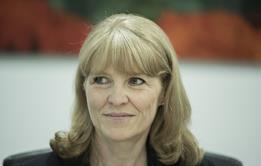
Exploring the relationship and contradictions between the Care Quality’s Commission’s verdicts and the quality of the people who lead the inspected organisations
Currently reading
Top chief executives roundtable, part one: dilemmas of CQC scrutiny
- 2
- 3
























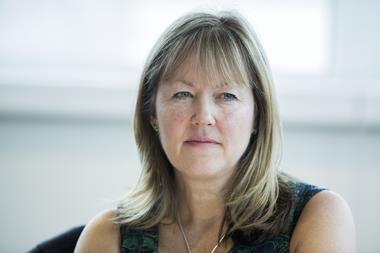
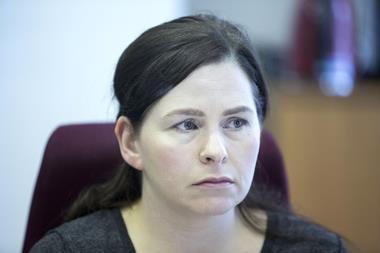

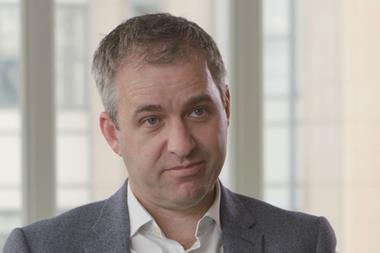


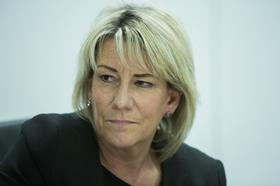
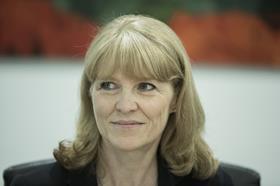
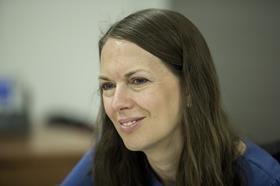
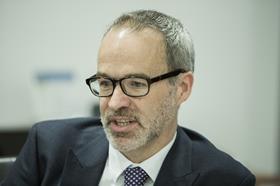
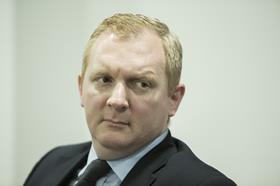














No comments yet